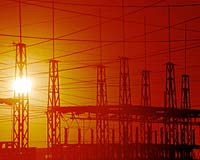 |
Beijing (UPI) Dec 31, 2009 With the world's highest level of greenhouse gas emissions and the largest market in the world by floor space, building "green" is becoming the architectural trend in China. "A few years ago, sustainable design was not quite focused and was not seriously considered in most developments," said William Wong, associate director of the Hong Kong office of Arup, a global firm of independent designers, engineers and consultants, China Daily reports. Because China's development is growing so rapidly, "all levels of government, designers, and even the general public are becoming more aware of environmental issues and how bad the consequences could be due to ignorance of sustainable design," he said. Building operations account for about one-sixth of China's total carbon emissions, according to the China Greentech Report 2009, published by a business consortium, The Wall Street Journal reports. Now more design professionals in China are beginning to adopt standards from the United States for environmentally sustainable buildings, such as certification from the Leadership in Energy and Environmental Design, an internationally recognized rating system designed by the U.S. Green Building Council. China already has a number of LEED-certified buildings and more than 100 under construction seeking approval, yet none has received the organization's prestigious platinum award. Parkview Green, the first building in Beijing to make use of a "micro climate" to minimize energy consumption, is aiming for a LEED Platinum certification. Designed by Integrated Design Associates, its four towers are entirely encased in a transparent "envelope" protecting them from outside elements. The casing's ventilation system releases hot air in summer, replacing it with cooler air from the ground. In winter the covering acts as a greenhouse, surrounding the buildings with warm air. The Linked Hybrid, Beijing's recently completed eight-tower structure by Steven Holl Architects, was designed to qualify for a LEED Gold certification. Boasting one of the world's largest geothermal cooling and heating systems, its buildings maintain a natural temperature between 60.8 and 69.8 degrees Fahrenheit without air conditioners or water boilers. This is accomplished by water pipes that run through each floor and flow 328 feet underground in 660 wells, cooling the water in summer and heating it in the winter. "I think we design for the future; we cannot design for the past," Li Hu, Steven Holl Architects partner and director of projects in China, told China Daily. "A good building always provides opportunities for the future." An October report by the Natural Resources Defense Council and Boston Consulting Group estimated that "moderate" energy conservation, affecting 5 percent of China's existing buildings and 60 percent of new buildings, would have an environmental impact equivalent to halting global air traffic for four months.
Share This Article With Planet Earth
Related Links Powering The World in the 21st Century at Energy-Daily.com
 Smart Grid spending set to grow worldwide
Smart Grid spending set to grow worldwide Boulder, Colo. (UPI) Dec 28, 2009 The days of the conventional electricity power grid are numbered and business opportunity, pragmatism and the need to better monitor both use and users of electricity have combined to raise the prospect of a multi-billion dollar industry growing worldwide. A report by Pike Research, based in Boulder, Colo., said global investment in replacing antiquated systems with Smart Grid technolog ... read more |
|
| The content herein, unless otherwise known to be public domain, are Copyright 1995-2009 - SpaceDaily. AFP and UPI Wire Stories are copyright Agence France-Presse and United Press International. ESA Portal Reports are copyright European Space Agency. All NASA sourced material is public domain. Additional copyrights may apply in whole or part to other bona fide parties. Advertising does not imply endorsement,agreement or approval of any opinions, statements or information provided by SpaceDaily on any Web page published or hosted by SpaceDaily. Privacy Statement |